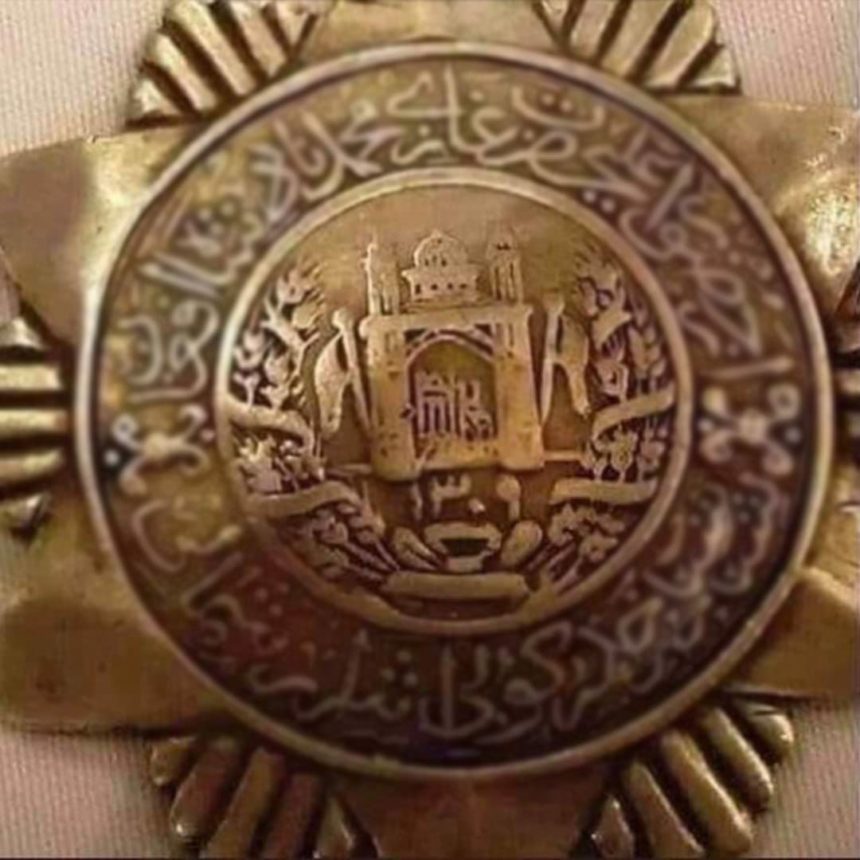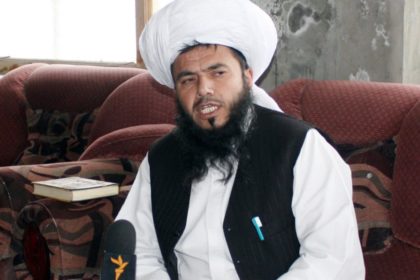The “Northern Rebels Suppression” medal, emblematic of documented tribal fascism, served as a moral impetus for plundering, looting, home theft, and property confiscation in the northern provinces. Following the pillaging of assets, orchard arson, and mass killings perpetrated by southern Pashtuns and the Islamic party militia across the Durand Line, the Nader Shah government awarded this medal to its fighters. The treacherous Shah of Afghanistan, Nader Shah, delegated this medal as a reward for presenting the heads of martyrs from the north. Symbolizing encouragement for Nader Shah’s historical and oppressive crimes against the northern provinces, this medal is etched into the annals of the country’s history.
After the defeat of Amir Habibullah Khan Kalakani’s government, the treacherous Shah of Afghanistan bestowed this fascist medal to incentivize his forces to commit atrocities upon innocent people in the northern provinces. The inscription on the medal read: “In the presence of His Highness Mohammad Nader Shah Ghazi, a mark of service in suppressing the Northern Rebels.” Termed contemporarily as the “Medal of Crime, Genocide, and Infamy,” Nader Shah employed it to endorse bitter historical crimes against the people of the northern provinces. Thousands of non-Pashtun ethnic groups in these provinces were labeled “traitors” for supporting Amir Habibullah Khan Kalakani. Women and daughters were abducted as sexual slaves, and their lands were distributed to southern Pashtuns.
Amir Habibullah Khan Kalakani, after receiving religious endorsements and oaths of allegiance, ascended the throne of Afghanistan. Positioned as a devout and religiously zealous leader, he was titled “Servant of the Religion of the Messenger of Allah,” with the country’s religious scholars wholeheartedly supporting his government. The treacherous Shah of Afghanistan, like Amanullah Khan, who sought British support against his government, opposed it. Similar to Amanullah Khan’s plea to Pashtun tribes for exemption from taxes and military service in return for defense, Nader Khan mobilized the people of Paktia. Once again, Nader Khan followed Amanullah Khan’s lead, instigating a nationalistic struggle and inciting Pashtun tribes. He initiated an ethnic war against the government of Amir Habibullah Khan Kalakani.
According to contemporary Afghanistan history, Nader ordered his troops to attack the north, proclaiming, “Their heads are mine, their belongings are yours.” Following this directive, the “Northern Rebels Suppression” medal was awarded to his militia for committing heinous crimes and massacres against the people of the north. Amir Habibullah Khan Kalakani, along with his Tajik associates, mostly hailed from the northern provinces. With political and racial biases, Mohammad Nader Khan accused the people of these provinces of collaboration with the government of Amir Habibullah Khan Kalakani, executing them and showering them with Bullets. Mir Gholam Mohammad Ghobar reports that newspapers affiliated with Nader Shah’s tribal regime circulated news of executions of people from the northern provinces at every station. “The government newspaper Islah, in its month of February in 1924, wrote that 51 ‘Northern Rebels’ were executed in one day in Kabul.” Islah continued to report in the month of June in 1930 that seventeen “Northern Rebels” (people of the north) were executed in the Kabul Chaman Hozori ground. According to Ghobar, Islah, in its July issue, also reported that a number of people from the north were executed.
Quoting Islah (the organ of Nader Shah’s tribal government), the book “Afghanistan in the Path of History” narrates: “Three corrupt individuals, two drinkers, several national traitors, and a group of Northern Rebels which inhabitants insisted on being executed were executed.” According to contemporary Afghanistan history, Nader Shah, the treacherous Shah of Afghanistan, executed more than seven hundred individuals from the north in Kabul under the name of “Northern Rebels.” The precise figures for the massacres and mass killings perpetrated by Mohammad Gul Mohmand in the north are not available. However, he committed such atrocities and oppression against the people of the north, alongside burning their homes and orchards, that contemporary Afghanistan history deems it comparable to a war between two countries—one of which, after years of enmity and hostility, annexes territories of the other and sets it ablaze.
Mohammad Gul Khan Mohmand, relying on his 25,000-strong militia and an organized military force with government artillery in the provinces of Parwan and Kapisa, conducted military operations so brutal that they are impermissible even in a country occupied by a foreign power. Nevertheless, with these heinous operations in these provinces, Mohammad Gul Mohmand assumed the guise of a victorious marshal. Upon entering Kabul, the treacherous Shah (King) of Afghanistan declared the belongings and assets of his opponents lawful for his tribal army. Those affiliated with him seized people’s homes and looted their belongings. According to contemporary Afghanistan history, Sarboland Khan Jaji, who had occupied a citizen’s house in Kabul, responded when the owner demanded the removal of the occupation by saying, “The Shah has taken Arg (the presidential palace), and I have no right to vacate a house? We both came to Kabul on the same day; whenever he returns Arg to its owner, I will vacate the house as well.”






